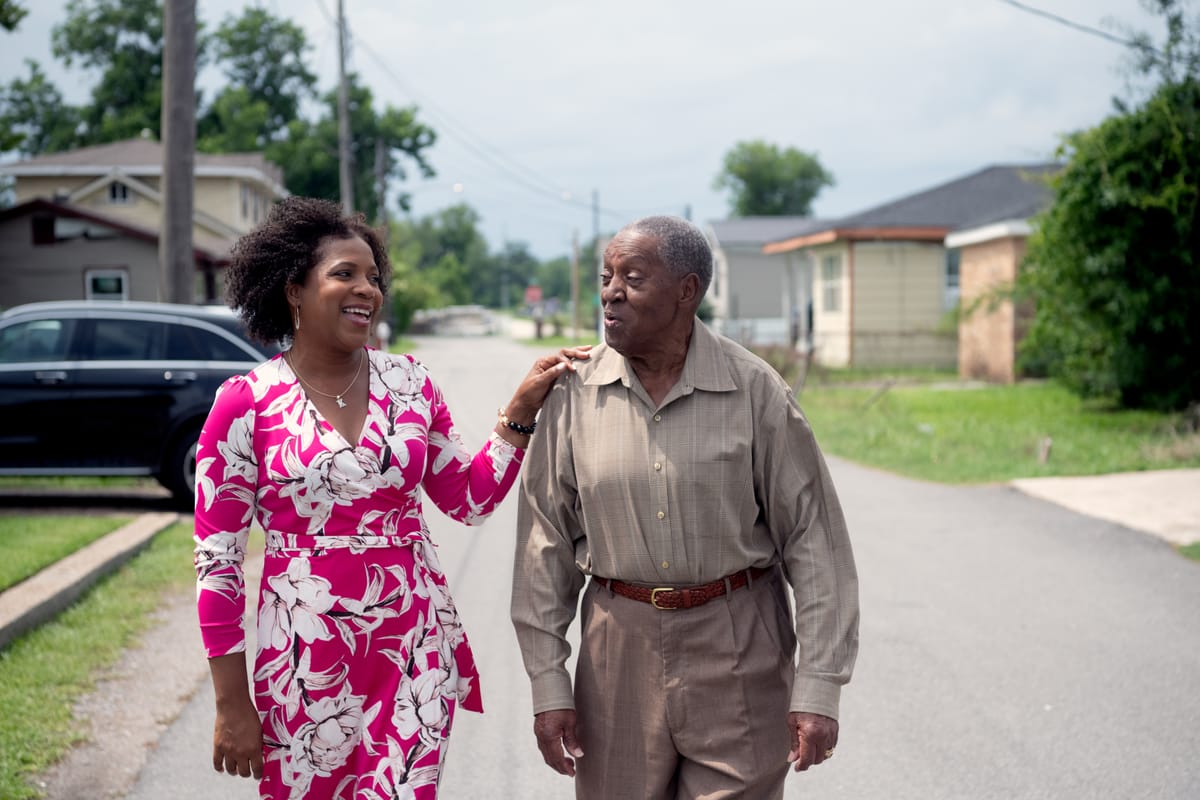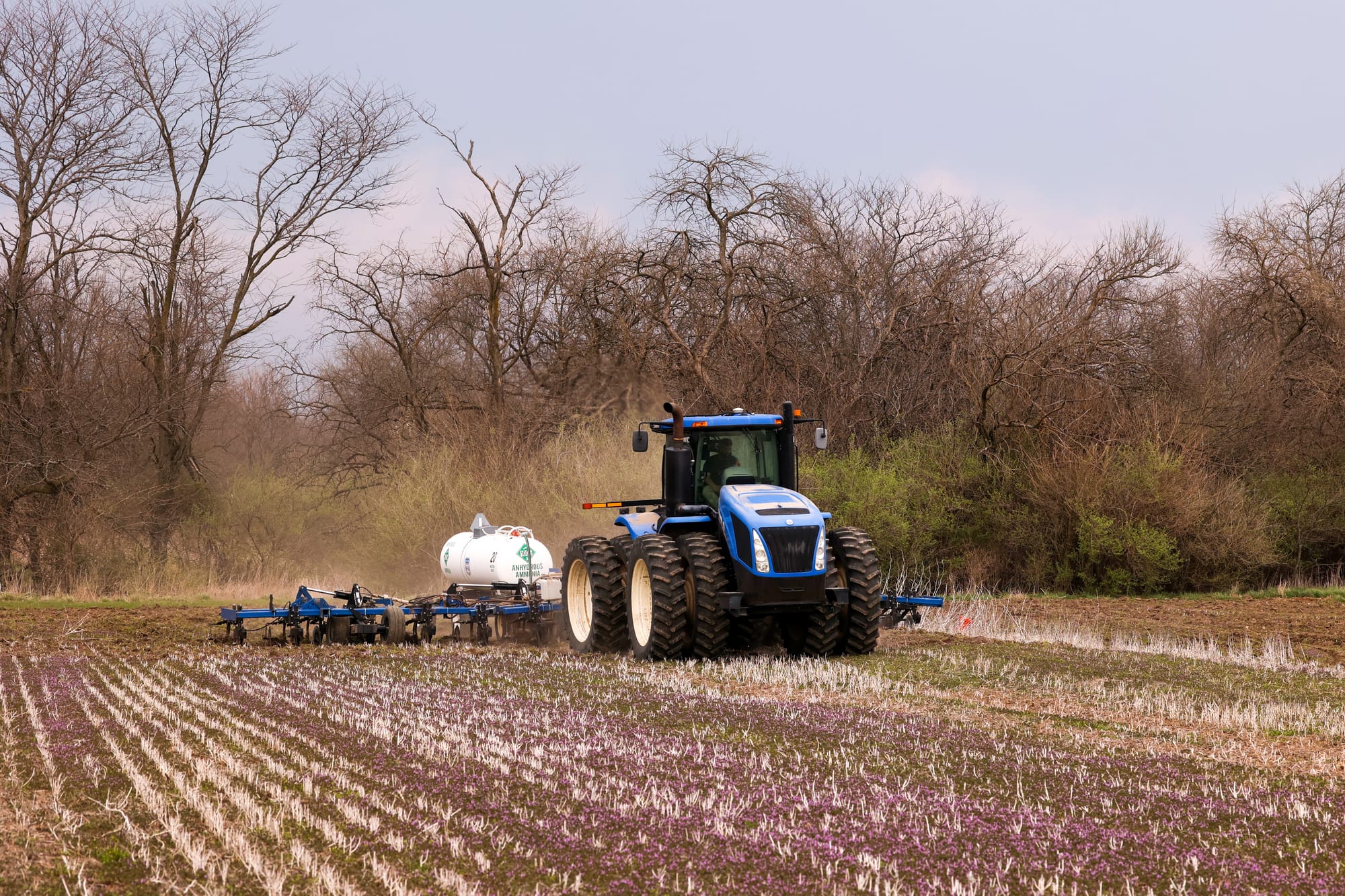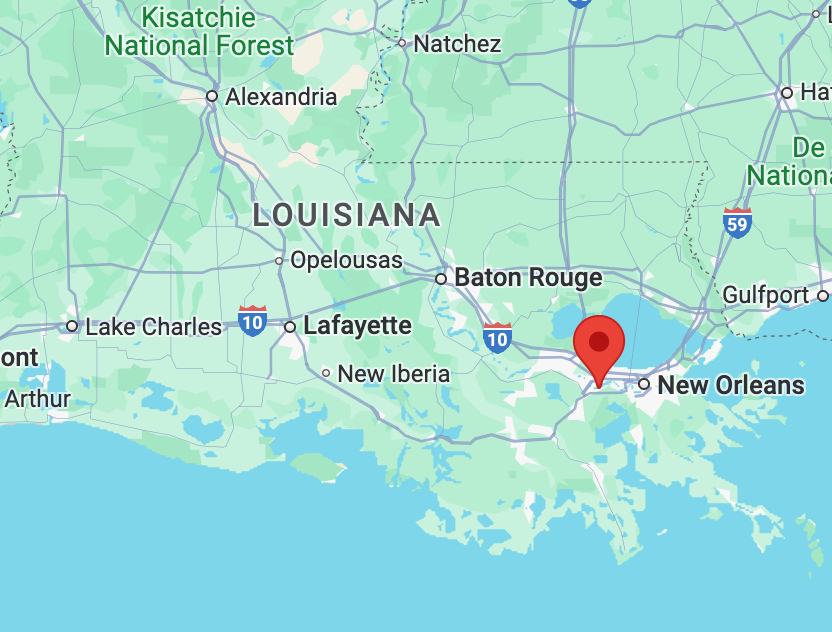Louisiana advocate leading fight against ammonia plant: ‘I already feel ignored’
The facility is being touted by state leaders as key to the clean energy transition — and job creator for residents of Louisiana’s ‘Cancer Alley’

Published by the Louisiana Illuminator, WWNO, WKRF
It wasn’t Kimbrelle Eugene Kyereh’s intention to become a community leader when she moved back to her hometown of St. Rose, Louisiana in 2017. But it’s the role she felt she had to take when she learned a petrochemical company had plans to build a $4.6 billion blue ammonia plant in her predominantly Black community.
Kyereh, 54, already lives on the fenceline of International-Matex Tank Terminals’ 216-tank bulk liquid facility that serves as a storage site for products including ethanol, renewable diesel and petroleum products, chemicals that she fears are damaging her health. The plant was cited last month by the U.S. Environmental Protection Agency for excessive emissions and unsafe conditions at its storage tanks.
What is worrying Kyereh these days is St. Charles Clean Fuels’s plans to build a blue ammonia plant and store its liquefied ammonia on the IMTT site. The company says the massive facility will play a key role in the country’s transition from fossil fuels to cleaner energy.
Ammonia is conventionally produced from natural gas, coal or oil. In this case, the plant would generate hydrogen that would be used to fuel it, and it would employ carbon capture and sequestration to reduce the facility’s planet-warming emissions. The owners say the ammonia will be used to produce “clean fuel” and as feedstock to the fertilizer industry.
Kyereh doesn’t believe that it will be cleaner — she fears the facility would only intensify the air pollution already harming the community.
It’s why she said she couldn’t sit back and let another large industrial operation move into their historic community in St. Charles Parish. And that’s how her nonprofit, Refined Community Empowerment, was born in July 2023 — three months after the state’s economic development agency announced St. Charles Clean Fuels intended to lease more than 200 acres for the plant — practically in Kyereh’s backyard.

Residents complain of odor, headaches
“They claim that we will not smell any ammonia,” Kyereh said. “We don’t believe it because we smell all these other chemicals. How are they going to handle these chemicals any differently from the other ones that enter our homes at various times of the night and morning and day? Waking us up out of our sleep and causing headaches and respiratory issues?”
Rosemary Green, who also lives near the IMTT facility, said she too has been awakened in the middle of the night by the stench of chemical fumes. She said it feels like someone pouring sand down her throat and in her nose.
For the past 10 years, the 69-year-old Green has lived next to the storage tank facility. She has repeatedly complained to authorities about the toxic odors that have permeated the air, giving her and her neighbors headaches.
She also doesn’t trust what St. Charles Cleans Fuels is selling about the safety of carbon capture and sequestration (CCS). Kyereh agreed, pointing to the 2020 pipeline leak in Satartia, Mississippi that sent 45 people to the hospital.
“Once they put it in, where it's going, what effects it should have, on the soil, on our water supply, all that,” Green said about CCS. “(They) don't know what it feels like when you're choking in your sleep at night, but (they) want me to believe that it's okay to bring this little ammonia plant into our neighborhood on top of what we’re already dealing with.”
A recent on-site inspection by the EPA found IMTT failed to identify hazards that could cause accidental releases of hazardous chemicals, that the company had not conducted the appropriate equipment testing and failed to maintain safe work practices.
In July, the EPA announced a consent agreement with IMTT that included a $23,568 civil penalty for violating the federal Clean Air Act. It also agreed to make $150,000 worth of upgrades “to reduce annual air emissions and unsafe pressure build-up in its storage tanks,” the EPA said.

From plantations to industrial plants
St. Rose sits on the east bank of the Mississippi River and is among the cluster of predominantly Black and heavily industrialized communities that make up the 85-mile Louisiana corridor known as “Cancer Alley.”

Like so many of the small towns dotting the corridor, St. Rose’s history is tied to the American slave trade. In 1873, a formerly enslaved man purchased property in St. Rose and later invited freemen and their families to establish communities that became known as Elkinsville and Freetown.
As sugarcane plantations crumbled, oil and gas facilities took their place, creating an environment of pollution and economic disinvestment. Much of the area is now known as sacrifice zones — majority Black communities overburdened by toxic emissions and extreme weather and coastal degradation caused by climate change.
In recent years, more and more grassroots organizations led by community leaders like Kyereh are trying to end the cycles of early death and health complications by blocking further industrialization.
‘Clean’ ammonia plants proliferate
St. Charles Clean Fuels is a joint venture of global energy investment company Copenhagen Infrastructure Partners and Sustainable Fuels Group. The company says the proposed blue ammonia plant would produce some of the “cleanest” ammonia in the world. It would do that using self-generated hydrogen fuel and capturing and sequestering more than 90% of carbon dioxide emissions.
It’s one of at least 14 proposed “clean” ammonia projects announced in recent years, mostly along the Gulf Coast. The rising global interest in clean ammonia and generous federal tax credits for CCS in the 2022 Inflation Reduction Act are spurring the growth, according to Housley Carr, an analyst at RBN Energy.
“The proposals that remain on track are generally those planned or backed by deep-pocketed, larger companies with extensive experience in developing complex projects and lining up the large, reliable buyers that make such projects possible,” Carr said.
Critics of CCS say it is a ploy by the oil and gas industry to stay in business — through generous tax credits and federal incentives — as the Biden Administration pushes toward its ambitious net-zero emissions goals. It involves pumping carbon dioxide emissions deep underground or transporting it through underground pipelines to remove it from the atmosphere.
The project is expected to create 216 new direct jobs with an average salary of more than $90,000 annually, according to Louisiana Economic Development’s announcement about the project last year. The state agency also estimated 949 new indirect jobs during peak construction.
“This … represents a shift to a future of clean fuels and clean fertilizer production that benefits both the regional community and cleaner energy supply needs,” said Chandra Stacie, the director of government affairs and community relations for St. Charles Clean Fuels. “Financing and building infrastructure that deploys cleaner solutions like blue ammonia is essential to fighting climate change.”

Environmental concerns aired
The project needs to secure permits from the Louisiana Department of Energy and Natural Resources and the U.S. Army Corps of Engineers. A public hearing on its coastal use permit from the state is set for 5 p.m. on Thursday (Aug. 22) at the St. Charles Regional Library.
Local environmental groups have asked the state and Corps of Engineers to deny the company’s permit requests. They say the facility would produce dangerous chemicals — primarily ammonia — which in high concentrations can cause burning in the eyes, nose and throat.
In its 40-page letter opposing the project on behalf of Kyereh's group and others, Tulane’s Environmental Law Clinic said the project would disturb a “significant amount” of nearby wetlands, likely eroding St. Rose’s flood protection and storm drainage capacity. It also said runoff of “unquantified and unidentified pollutants” would flow into the Gulf of Mexico and the surrounding area, harming plants and animals.
Tulane also argued the project would disrupt the historical and archeological aspects of the community. Similar arguments were made 30 miles away in Wallace, where opposition by community advocates, sisters Jo and Joy Banner, helped to stop a massive grain export terminal they said would have destroyed some historical landmarks in their predominantly Black communities.
“I already feel ignored,” Kyereh said about the fight against the blue ammonia plant. “We have asked for public hearings before every agency they need permits from. A lot of us residents are really afraid of having more chemical spills … and chemicals that are not being picked up by smell.”
Reporter Pam Radtke contributed to this report.
Floodlight is a nonprofit newsroom that investigates the powerful interests stalling climate action.


